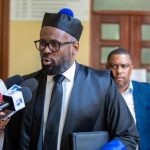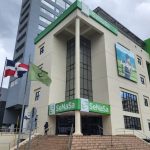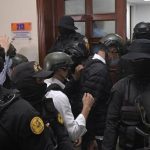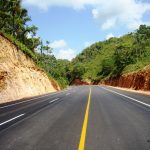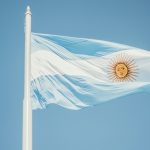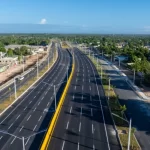“In the Dominican Republic, 2 to 300 earthquakes are registered every month,” says Onesvie.
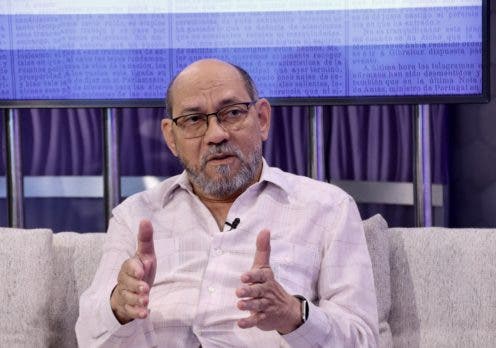
The director of the National Office of Seismic Assessment and Vulnerability of Infrastructure and Buildings (Onesvie), Leonardo Reyes Madera, illustrated that in the Dominican Republic, there are 2 to 300 earthquakes every month, which he explained is usual and reasonable because it means that the Earth is breathing and accommodating.
“Without earthquakes there would be no life because the center of the Earth is incandescent: there are a series of currents that are generated in the core,” he said.
He invited us to imagine that the Earth is an orange and that it is deformed to the extent that it interacts with other stars, which generates fissures and, for these, they begin to breathe, giving as an example volcanoes.
“Seabed volcanoes; those on the surface… And that is the way to breathe the Earth, “explained Reyes Madera during his participation in the program Reviews, hosted by journalists Rafael Núñez and Adelaida Martínez R., on Entelevisión, on Saturdays at 9:00 at night.
He went on to invite us to imagine that the crust of the Earth is that peel of the orange: an element that is pulled from one day to here and pushed there; It lives by turning and moving because it breaks into pieces, and that is what is known as tectonic plates.
“The tectonic platesare the zones of weakness, of rupture. The contact zones between one plate and another. And if we come to our country, we find that the island is mounted on the Caribbean plate, which in turn adjoins and collides with the North American plate, “illustrated the director of Onesvie.
He explained that in the west is the so-called “coconut plate” from Central America, which is pushing the country, and the Caribbean area is moving east-northeast at a speed of 2 to 3 centimeters per year, which implies that it will be accommodated.
There are different types of moves. Depending on your size, you will be able to beat a smaller opponent, or a larger one will beat you.
“What happens, that when we start to collide with the Atlantic plate, which is huge, what it does is it gets under us … and every time it penetrates a little there is a tremor, that’s why the famous Puerto Rico trench or the Milwaukee Trench is formed,” he explained.
He said, “if we go south, we have another pit because we cannot push South America that also gets underneath us: there is one on one side and one on the other… Before, it was believed that we would fall into the pit, but if we look at the most recent formation… All our shores are emerging.”
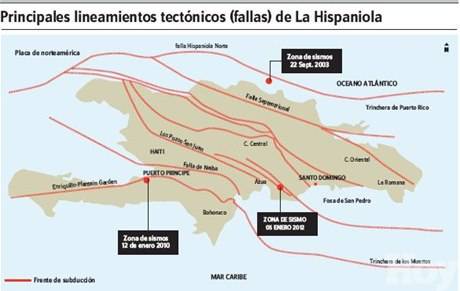
The faults in the DR and the 8.1 earthquake of 1946
In the Dominican Republic, there are 14 active faults, which means that in any of them, an earthquake can be generated, and in this regard, Reyes Madera explained that they are not the same.
He said that theEnriquillo fault is the most active one, and the northern one has not moved for many years, and that does live accumulating energy.
“The day those materials in contact exceed their elastic limit, a strip is broken, energy is released and that area is readjusted… It is a sudden movement followed by others that are accommodating until it stabilizes,” he explained.
He recalled that in 1946 there was an earthquake in Nagua of 8.1 that produced a tsunami in the town that was cut off for more than a month.
“Every earthquake is a lesson to be learned.”
Regarding the earthquakes that greatly affected Turkey and Syria, the director of Onesvie, Leonardo Reyes Madera, said that “each earthquake is a lesson to learn from the point of view of earthquake-resistant engineering, because this is a trial and error” to make adjustments in the Code after the events.
“It has caught my attention and I have been quite concerned about the fact that, Turkey, in 2009 had a large earthquake and most of its buildings failed by the same criteriapossibly as those that collapsed now: it was the concept of soft floor, those buildings that you use at the bottom for shops or parking lots and upstairs as housing.” Reyes Madera explained.
He said that when that happened in 2009 in Turkey, in 2011, the Dominican Republic penalized that in its regulations, which is why if it has been built taking this into account, you should not have that type of results.
Reyes Madera said that the issue of short columns is also penalized in the country, especially for schools, and that they went further, asking that any building had three instead of two axles of load.
“These are experiences taken from the damage and collapse of buildings in earthquakes… So, it’s strange that the buildings in Turkey collapsed again,” said the director of the Onesvie.
The current RD code
About Onesvie, he said that the origin caused by the presence of this office focuses on what will happen to those buildings that were made without taking into account the earthquakes to find a way to identify any vulnerability in those buildings.
“We started making relatively small buildings and they considered seismic force, we spent 31 years reviewing that regulation, and we’ve continued to build unconsciously… So, now we have seen that there are also vulnerable buildings,” questioned the director of Onesvie.
He said that as of 2011, it is already a law requiring all types of buildings to contemplate the effects of earthquakes, and it is a more demanding and direct regulation.
“While most other codes allow you to reduce a seismic strength level of up to 10… we limit from 5 to 5, the soft floor and short columnare penalized, we control the displacement so that the glass does not break, we control the displacement between one floor and another,” he said, referring to what is sanctioned via the code.
He welcomed the fact that the Government has decreed that through the Onesvie, a major incursion can be made into the reinforcement of schools.
“The office already has an important body of qualified professionals in the area and we have made a lot of evaluations and reinforcement proposals with simple elements(block, reinforced concrete, etc.)that apart from giving you the assurance that the school will not collapse, it also gives the work to the community, that is, it is a team effort where we are all going to benefit, especially the children and teachers, who are the ones who are there, “said Reyes Madera.
In addition to detecting possible failures and making recommendations for reinforcement, Onesvie also has the competence to follow up so that this is fulfilled, according to the recommendations.





